Customer loyalty is the key to customer retention, meaning repeat customers for your business. The fundamental goal for an eCommerce shop is to attract customers, and ultimately keep them coming. This is certainly true for members of the popular forum, eCommerceFuel, who come together in one of the world’s largest eCommerce communities to share their knowledge and experience with each other.
With the competition being so stiff in the online marketplace, you need to ensure the loyalty of the customers you have.
How do you get the edge though? What will keep clients coming back time and again to your store?
Adapted from a traditional shop model, an eCommerce customer loyalty program is essential for customer retention.
Let’s take a look at what it is and how to implement a customer loyalty program for your eCommerce store.
What is a Customer Loyalty Program?
A study by Experian Data Quality shows that 75% of US companies have seen a return on their investment from customer loyalty programs. Well-executed loyalty programs are proven to provide value and useful customer data.
Even more telling, 63% of companies use customer retention to track success. The number of new sign-ups is also an indication of a loyalty program’s impact.
Customer loyalty programs were used in the 1800s when customers earned copper tokens. These could then be redeemed for later purchases.
The concept of a rewards program followed, which thanked buyers for repeat business. It was quickly adopted by businesses across the world.
The practice has now spread to the world of eCommerce. Is your eCommerce business ready to join the future of rewards programs?
What is the Importance of Customer Rewards Programs?
Studies have shown that new customers don’t always equal increased sales.
Consumers like to feel valued. Customer loyalty programs go beyond marketing and recognize the role of the customer. Simply put, loyalty programs show you care.
Customers who feel unvalued leave businesses and increase the churn rate (the rate of clients who decide to take their business elsewhere). An increased churn rate will drive up the cost of acquiring each customer and reduce your profit margin.
How Can Customer Loyalty Programs Impact Your Bottom Line?
According to Bain & Company and HBS, a loyalty program increases retention rates by 5% and increases profits by 25% to 95%.
Costs are higher at the beginning of the relationship and usually level off as profits from each loyal client increase.

CEO of eBay, Meg Whitman says that the company is spending less than $10 to acquire a new customer. Loyal clients use word-of-mouth to refer new customers and provide personal advocacy. eBay has found that referred customers cost considerably less than maintaining marketing efforts.
Loyal customers essentially take the role of marketers as well as help desk staff – and they do it all for free.
It’s clear that for eCommerce companies, long-term profits depend on superior customer loyalty. Savvy business owners understand that customer rewards programs play a major role in business success.
It may seem that you are losing out by not having a program in action, and want to jump right in. Before you do, note that smart owners also need to know what’s out there and make informed decisions.
Firstly, which loyalty program is best for your business?
What are the Different Types of Customer Loyalty Programs?
Points Programs
This is probably one of the most common types of customer loyalty programs and also the simplest to implement.
The gist of these loyalty programs is for the customer to earn points as they spend. They are typically used by shops that offer low-cost purchases.
Points are then redeemed for rewards such as:
- Freebies
- Discounts
- Special goods
Discounts and coupons have proven to be the best tactic for driving loyalty. According to Expedia Affiliate Network, 61% of consumers actively use these two rewards regularly.
Free shipping is another incentive that can be based on the points that customers earn.
An excellent example of a point-based loyalty program is that of The North Face clothes brand. They offer a unique way of redeeming points and reaching their target market.
Their VIPeak program shows how you can use your loyalty program to create a connection between consumers and your brand.
Being a retailer of outdoor gear, the rewards include travel opportunities like adventure trips, group hikes, and even mountain climbing experiences.
Imagine being a buyer and lover of hiking equipment, then being gifted an amazing hiking trip?

Spend Programs
Spend programs are easy to implement and maintain. Customers need to reach a certain amount of spend in a set time. Once reached, they receive store credit or a gift card.
It’s convenient for customers as they’re already spending money. For eCommerce stores, this equals more transactions per customer and better profit margins per transaction.
Tiered Programs
For tier-based programs, customers ‘climb the ladder’ as they spend more. They’re usually used for big-ticket items such as airline tickets. Consumers will increase their spending to reach a higher tier and gain more rewards.
Uber is an example of a successful tiered program. It was launched to counter competition from other companies like Lyft and Grab.
Similar to airlines who target frequent fliers, Uber Rewards targets frequent riders.
Customers receive 500 points on entry which rewards them with $5 to use on a trip. To reach the next level (Gold) they need another 500 points. Rewards include free cancellation and faster customer service.
The levels increase up to Diamond which requires 7,500 points. Rewards are upgrades to Uber Black cars, free Uber Eats rides, and dedicated phone support.
The aim is to encourage clients to use the more expensive offering – in this case, Uber Black rides – to reach the Diamond level faster.
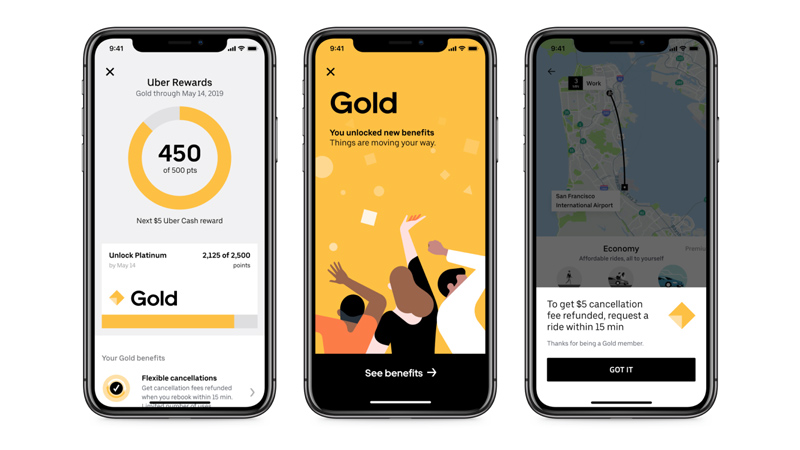
Paid Programs
Also known as a VIP or Premium program, paid programs require customers to pay for membership.
By paying an annual or one-time fee, consumers receive exclusive rewards. Thanks to this exclusivity, these programs make brands seem more valuable in the eyes of the customer.
The advantage of paid programs for eCommerce owners is that you can actually save money. You receive membership fees to fund the benefits provided and may even have a surplus.
Members of a premium program are more likely to remain loyal as they don’t want to waste their money. It will also encourage increased repeat purchases as they try to recoup the cost of joining.
Amazon Prime is one example of a highly successful VIP program. For a monthly or annual fee, members get discounts, free shipping, access to free videos, and music.
The free entertainment woos Millennials who often spend thousands on subscriptions and purchases. More serious shoppers will love the free shipping if they are constantly ordering.
Take a leaf from Amazon’s book and give your customers a gift they really want, and not just generic offerings.
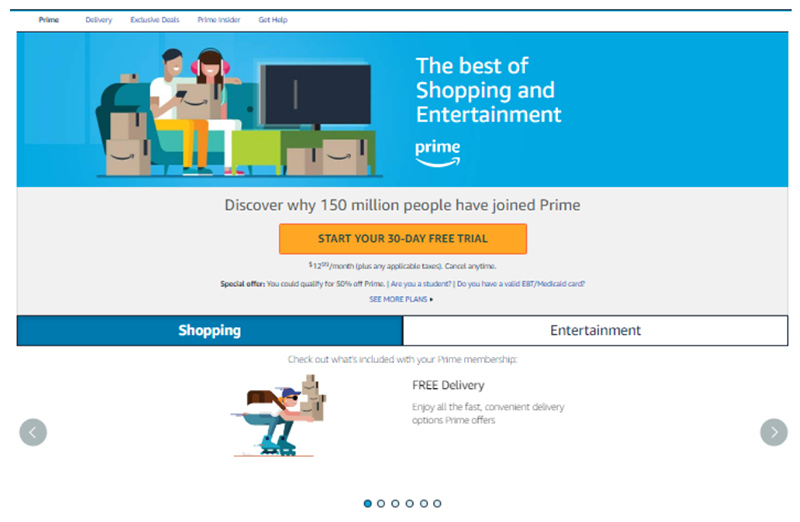
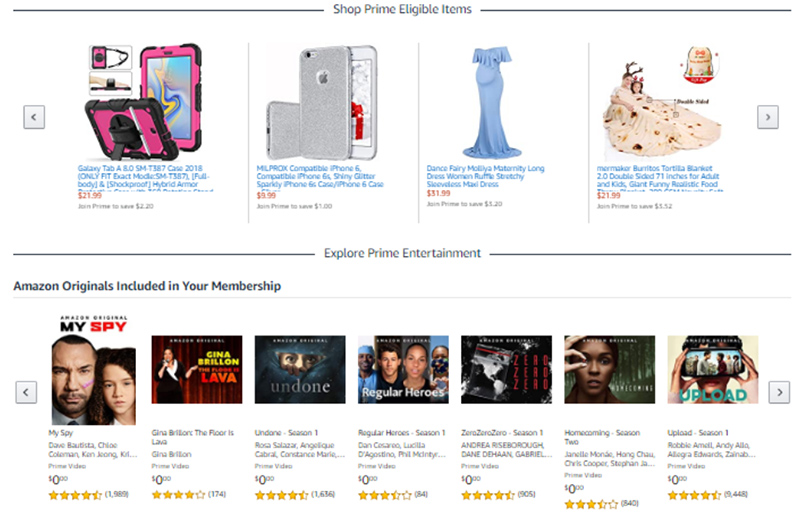
Gaming Programs
Starbucks was one of the first to include gamification in a customer rewards program.
The My Starbucks Rewards program adds an aspect of fun to earn points. Customers are encouraged to play the game on the mobile app and earn stars. The stars earned allow them to redeem free cups of coffee as well as select merchandise.
An added advantage is the use of the app to market products directly to consumers. This combination of gaining loyalty and marketing offers the best of both worlds.
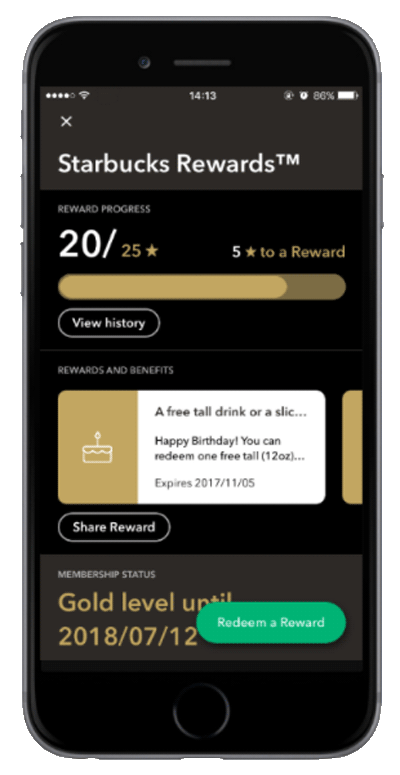
Value-based Programs
Create a strong ethical relationship with customers that is based on your values. If they feel part of a world-wide cause, they will be more inclined to become brand ambassadors.
Maybe you run an online garden shop. Your reward system could give a percentage of what a client spends to a climate-change organization. Have an online grocery store? Send money to Feed the Children or similar non-profit. The options are endless!
For example, Ivory Ella donates 10% of its profits to Save the Elephants.
Buyers can also earn discounts for making charitable donations. Who wouldn’t want to save elephants by shopping?
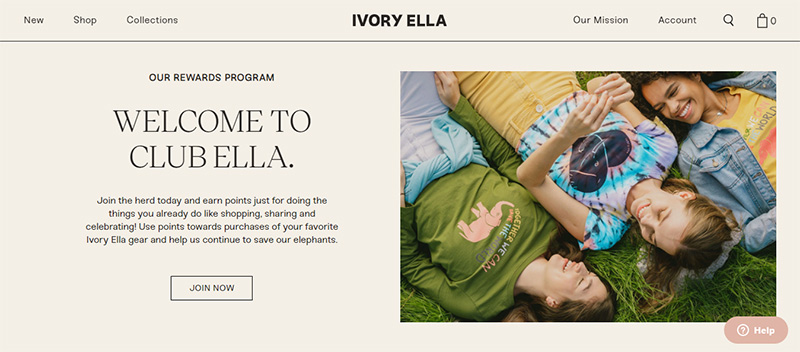
How Do You Measure the Effectiveness of Customer Loyalty Programs?
After launching your loyalty program, ensure you analyze your data to see if it has a positive impact on your eCommerce business. Although there are numerous metrics, sometimes, simplicity is key.
Here are the common metrics to use for your eCommerce business.
Customer Retention Rate
This is the most important metric because the main purpose of a loyalty program is to attract more repeat customers.
You need to decrease the churn rate, meaning the number of people buying from your shop should be more than those who move to the competition. Make sure to use a specified period and measure the number of customers you have retained.
To calculate your churn rate, the simplest formula is:

For example, if your business had 1,000 customers at the start of the period, and then 850 at the end of the period, your churn rate would look like this:

When you get a negative churn rate, it shows that more customers have made purchases. Great for your business, right? All businesses always want a negative churn rate.
Google Analytics
Google Analytics can show you how many website visitors convert into loyalty program members. You can see at what points most conversions happen, with triggers such as ads or newsletters. You can then improve the weaker triggers and adapt your loyalty strategy.
Net Promoter Score (NPS)
The Net Promoter Score shows how likely a customer is to recommend your business to others. It’s an indicator of business growth and measures customer experience on a scale of 0-10.
Conduct a survey of your customers, divided them into three categories.
- Promoters (Score 9-10): Existing customers who are fiercely loyal. As loyalty program members, they’re likely to refer your business to others.
- Passives (Score 7-8): Customers are impassive and can be swayed by competitors. You can work to engage them and turn them into promoters with your loyalty program.
- Detractors (Score 0-6): These are customers who are not pleased with your brand or products. They are likely to spread negative word-of-mouth and can harm your brand.
To calculate your NPS, use the below formula:
Promoter % – Detractor % = NPS

An answer of -100 means all your customers are detractors. In the converse, +100 shows you have all promoters. You need to aim to achieve the highest possible number.
Steps to Create a Customer Loyalty Program
You want to create a program that not only attracts members but creates loyalty.
You could also combine a few different types according to your needs.
The steps you need to take to make your own programs are as follows:
1. Identify Your Needs
The major aim of your program is to target your top customers and keep them shopping with you. You will need to ask key questions to identify major factors, such as:
- Why do you need a customer loyalty program?
- What are the goals of the program?
- Who are the key customers you are targeting?
- What benefits do your customers gain from your products?
After answering these questions, choose the type of program you want to create based on the options outlined above.
2. Fine-Tune Necessary Details
After completing the basics, go into details of the program, such as the terms and conditions. Decide on the rewards you will be offering and how to communicate with consumers. As an eCommerce store, you may want to implement an app or use your website to communicate with members.
3. Launch a Beta Program
Test your program with a select few top customers. Launch a pilot loyalty program that will allow you to fix any issues and check the clients’ responses.
4. Implement a Complete Program
The three steps to implementing your loyalty program are:
Step 1: Create a report of your top customers according to the amount spent. You need to determine who qualifies for a reward based on points earned or money spent. This can be a quarterly or monthly report, depending on your specifications.
Step 2: Send a reward to your top customers and communicate their eligibility to claim the reward.
Step 3: Repeat this each month or quarter and take note of the trends. You will notice customers who have stopped shopping. Offer them discounts or shopping credits to ‘re-activate’ them into the loyalty program.
If you notice there are consistent customers shopping and claiming rewards, acknowledge them with a thank you piece of communication.
5. Focus on the Redemption Process
The process of redeeming a reward needs to be simple and communicated to customers. You want to encourage a high redemption rate otherwise there will be a high churn rate.
6. Communicate Progress to Members
Keep program members aware of their progress with regular updates. Let them know how close they are to receiving rewards and use examples of other members who have achieved the set goals.
7. Reduce Churn Rate After Redemption
Some members may leave your store after redeeming a prize. You need to give them an incentive to keep shopping.
Give discounts or upgrade their membership as encouragement to achieve the new goal.
Nothing makes customers feel more valued than being personally recognized and acknowledged.
How Do You Use Social Media as Part of Customer Loyalty Programs?
Most eCommerce stores have social media profiles (or they should). Customer loyalty programs are a great way to gain an audience if coordinated with your social media assets. Offer points and additional rewards for engagement like follows, shares, and likes.
Here is a great example by Unique Vintage:

They encourage customers to follow their Instagram account through the UV program. They then engage with the customer by using attractive content.
Eye-catching content that targets the audience and showcases your products can be very effective. Like this example:
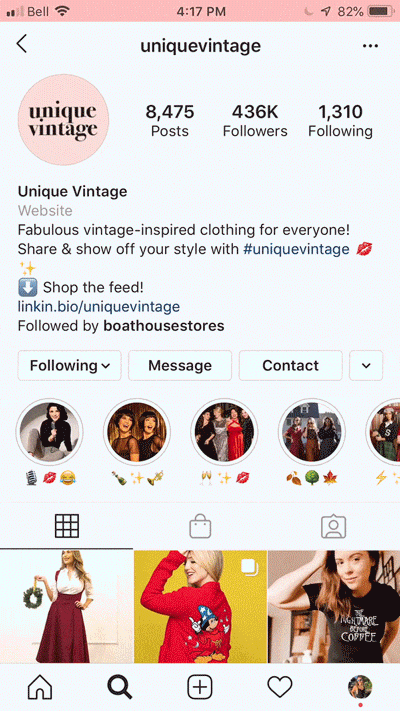
Customer Loyalty Program Tools and Apps
You could develop your own loyalty apps and customize them to your website. If you don’t have the infrastructure or budget, apps are available.
You could also see if you qualify to join eCommerceFuel and have an opportunity to apply for eCommerceFuel Capital. It’s a chance to access long-term funding and world-class mentorship.
Take a look at some of the top apps for your loyalty program.
Stamp Me Loyalty App
This award-winning app can be used by businesses of any size. They offer customized reward solutions as well as a digital stamp loyalty card on the phone. This allows you to manage your digital loyalty program, communicate directly with customers and increase retention rates.

TapMango
TapMango provides tools to run your loyalty program and target loyal customers. They also offer tools such as SMS and email to encourage customers to keep returning to your store.
You can control the rewards customers earn and take advantage of the referral option. This customer loyalty program lets clients keep track of their points and discount deals with a mobile app.
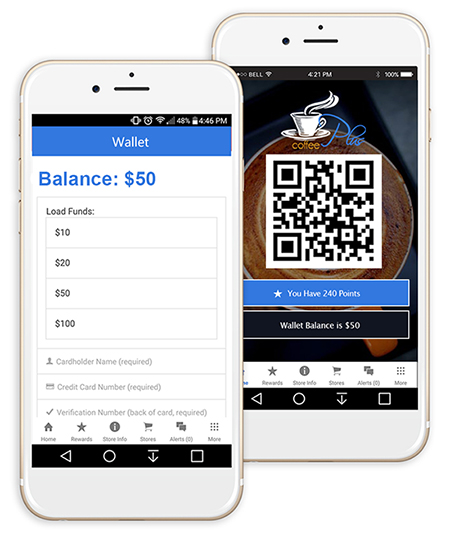
Smile.io
Smile.io is a points-based loyalty program that also offers VIP-based programs. You can also turn loyal customers into advocates by promoting referrals and social sharing.
You can control how customers share referral links via either social media or email.

Begin Your Journey to Customer Retention
We hope this guide is useful in your quest to create a successful customer loyalty program. Don’t forget to ask other eCommerce owners for help and share your experience by participating in online communities. You’ll quickly find that there are many others who have gone before you and worked out what works and what doesn’t work so well.
Remember, loyal customers are the best kind. They equate to free and highly-effective marketing and can often be the best advocates for your business.
Photo by freepik
The post How to Start an Ecommerce Customer Loyalty Program appeared first on eCommerceFuel.
 from eCommerceFuel https://ift.tt/3ioQxON
from eCommerceFuel https://ift.tt/3ioQxON via IFTTT
via IFTTT
No comments:
Post a Comment